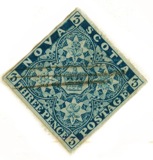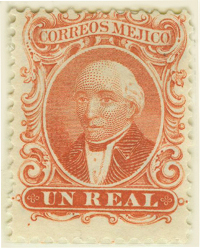
Discussion - Member to Member Sales - Research Center

Discussion - Member to Member Sales - Research Center

During World War II in the Protectorate of Bohemia and Moravia, the Gestapo used the "large fortress" of Theresienstadt as a ghetto / concentration camp for Jews from Czechoslovakia, as well as many from Germany, Austria, the Netherlands, and Denmark. More than 150,000 Jews were sent there, and although it was not an extermination camp, about 33,000 died in the ghetto, due to the appalling conditions caused by overcrowding. About 88,000 inhabitants were deported to Auschwitz and other extermination camps. At the end of the war, there were a little over 17,000 survivors.
Part of the fortification called the "small fortress", separated from the ghetto, served as the largest of the Gestapo prisons in the Protectorate of Bohemia and Moravia. It was separate and unrelated to the Jewish ghetto in the main fortress on the opposite side of the Ohre River.
The stamp was printed in dark green on white paper, and they were perforated 10 1/2. They were initially issued in miniature sheets of four stamps, but later on, they were printed in sheets of 25 (5x5) stamps. Only 76,000 of these stamps were printed.
Imperforate proofs of this stamp also exist, either in black or in dark green. Part perforated and double-print varieties are also known.
Here are some examples of mine :


Look closely at the picture and see the blue cross.....
But of course there are plenty forged (FALSCH) ones like this :

These forged ones are so good that even de legendary expert GILBERT had it wrong.
If you have these stamp look at the following, excellent site how to determine if your stamp is forged or not.
http://stampforgeries.com/forged-stamps-of-theresienstadt/
It is all in english

An example of an imperforated version :


Login to Like
this post
Litzmannstadt (Lodz)
The city of Lódz was captured by the Wehrmacht on 8 Sep 1939. The ghetto was created and was opened on 8 Feb 1940, closing a few months later, on 1 May 1940. Numerous deportations took place from the ghetto to extermination camps such as Chelmo. The ghetto was liquidated from 10 Jun 1944 to Aug 1944. The ghetto was liberated on 19 Jan 1945. Perhaps 10,000 of the 200,000 Jews who once passed through the ?ód? ghetto survived. After liberation by the Soviet army, approximately nine hundred Jews were found alive.
Lodz was the only ghetto which had its own stamps, albeit for a very short period. Many Germans bought large quantities of these stamps in the hope that they would have great value after the war.
The first issue consisted of two stamps, 5pf and 10pf. Below are pictures of various first issue stamps. The first stamp below is a 5pf color proof of the first issue in dark olive green on carton paper. The second stamp is a 10pf proof of the first issue in bright blue gray. The third stamp is a 5pf crimson proof of the first issue on carton paper. The fourth and fifth stamps are a set of the 5pf and 10 pf stamps. The last item is a tete-beche set of two of the 5pf red stamps.

Serie 1 Probedruck 1

Serie 1 Probedruck 1

Serie 1 Probedruck 2

Michel Nr I and IIby

Michel Nr I tete-beche
The second issue was designed by Pinchas Szaar. The stamps feature the image of Rumkowski and the symbols of the labor guilds active in the ghetto. They were issued in 5pf, 10pf and 20pf denominations. These stamps were in circulation for a few months. Below are examples of the second issue stamps. The first item is a 5pf original essay of the second issue on carton paper. The second item is a set of second issue stamps: 5pf; 10pf; and 20pf.

Serie 2 5Pfg ESSAY

Serie 2 Probedruck 1

Michel Nr III, IV and V
ONLY THE LAST SCAN IS MINE. All other pictures from the internet.
Hans Biebow, the Nazi head of the ghetto administration, was a stamp and money collector, which may account for the elegant designs of Lódz ghetto scrip currency and coins. These stamp issues may have been intended to appeal to his collecting habit, but if so, the idea failed. On March 14 Biebow forbade further printing and use of the stamps, and confiscated the unsold supply.
Reference : : http://www.edwardvictor.com/Ghettos/lodz_philatelic_main.htm

Login to Like
this post
"Hans Biebow, the Nazi head of the ghetto administration, was a stamp and money collector, which may account for the elegant designs of Lódz ghetto scrip currency and coins"
Nothing to do with stamps but interesting enough.........


Login to Like
this post

Theresienstadt
During World War II in the Protectorate of Bohemia and Moravia, the Gestapo used the "large fortress" of Theresienstadt as a ghetto / concentration camp for Jews from Czechoslovakia, as well as many from Germany, Austria, the Netherlands, and Denmark. More than 150,000 Jews were sent there, and although it was not an extermination camp, about 33,000 died in the ghetto, due to the appalling conditions caused by overcrowding. About 88,000 inhabitants were deported to Auschwitz and other extermination camps. At the end of the war, there were a little over 17,000 survivors.
Part of the fortification called the "small fortress", separated from the ghetto, served as the largest of the Gestapo prisons in the Protectorate of Bohemia and Moravia. It was separate and unrelated to the Jewish ghetto in the main fortress on the opposite side of the Ohre River.
The stamp was printed in dark green on white paper, and they were perforated 10 1/2. They were initially issued in miniature sheets of four stamps, but later on, they were printed in sheets of 25 (5x5) stamps. Only 76,000 of these stamps were printed.
Imperforate proofs of this stamp also exist, either in black or in dark green. Part perforated and double-print varieties are also known.
Here are some examples of mine :


Look closely at the picture and see the blue cross.....
But of course there are plenty forged (FALSCH) ones like this :

These forged ones are so good that even de legendary expert GILBERT had it wrong.
If you have these stamp look at the following, excellent site how to determine if your stamp is forged or not.
http://stampforgeries.com/forged-stamps-of-theresienstadt/
It is all in english 
An example of an imperforated version :


Login to Like
this post

re: Ghettopost Theresienstadt and Litzmannstadt
Litzmannstadt (Lodz)
The city of Lódz was captured by the Wehrmacht on 8 Sep 1939. The ghetto was created and was opened on 8 Feb 1940, closing a few months later, on 1 May 1940. Numerous deportations took place from the ghetto to extermination camps such as Chelmo. The ghetto was liquidated from 10 Jun 1944 to Aug 1944. The ghetto was liberated on 19 Jan 1945. Perhaps 10,000 of the 200,000 Jews who once passed through the ?ód? ghetto survived. After liberation by the Soviet army, approximately nine hundred Jews were found alive.
Lodz was the only ghetto which had its own stamps, albeit for a very short period. Many Germans bought large quantities of these stamps in the hope that they would have great value after the war.
The first issue consisted of two stamps, 5pf and 10pf. Below are pictures of various first issue stamps. The first stamp below is a 5pf color proof of the first issue in dark olive green on carton paper. The second stamp is a 10pf proof of the first issue in bright blue gray. The third stamp is a 5pf crimson proof of the first issue on carton paper. The fourth and fifth stamps are a set of the 5pf and 10 pf stamps. The last item is a tete-beche set of two of the 5pf red stamps.

Serie 1 Probedruck 1

Serie 1 Probedruck 1

Serie 1 Probedruck 2

Michel Nr I and IIby

Michel Nr I tete-beche
The second issue was designed by Pinchas Szaar. The stamps feature the image of Rumkowski and the symbols of the labor guilds active in the ghetto. They were issued in 5pf, 10pf and 20pf denominations. These stamps were in circulation for a few months. Below are examples of the second issue stamps. The first item is a 5pf original essay of the second issue on carton paper. The second item is a set of second issue stamps: 5pf; 10pf; and 20pf.

Serie 2 5Pfg ESSAY

Serie 2 Probedruck 1

Michel Nr III, IV and V
ONLY THE LAST SCAN IS MINE. All other pictures from the internet.
Hans Biebow, the Nazi head of the ghetto administration, was a stamp and money collector, which may account for the elegant designs of Lódz ghetto scrip currency and coins. These stamp issues may have been intended to appeal to his collecting habit, but if so, the idea failed. On March 14 Biebow forbade further printing and use of the stamps, and confiscated the unsold supply.
Reference : : http://www.edwardvictor.com/Ghettos/lodz_philatelic_main.htm

Login to Like
this post

re: Ghettopost Theresienstadt and Litzmannstadt
"Hans Biebow, the Nazi head of the ghetto administration, was a stamp and money collector, which may account for the elegant designs of Lódz ghetto scrip currency and coins"
Nothing to do with stamps but interesting enough.........


Login to Like
this post

